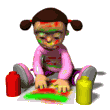
Developmental Cognitive Neuroscience Laboratory: Faculty Publications
Document Type
Article
Date of this Version
2017
Citation
Published in Developmental Neuropsychology 2017, Vol. 42, No. 5, pp. 336–350.
doi 10.1080/87565641.2017.1355917
Abstract
We examined the neural correlates underlying response inhibition in early childhood. Five-year-old children completed a Go/No-go task with or without time pressure (Fast vs. Slow condition) while scalp EEG was recorded. On No-go trials where inhibition was required, the left frontal N2 and posterior P3 were enhanced relative to Go trials. Time pressure was detrimental to behavioral performance and modulated the early-occurring P1 component. The topography of ERPs related to response inhibition differed from patterns typically seen in adults, and may indicate a compensatory mechanism to make up for immature inhibition networks in children.
Included in
Child Psychology Commons, Developmental Psychology Commons, Early Childhood Education Commons, Experimental Analysis of Behavior Commons


Comments
Copyright © 2017 Taylor & Francis. Used by permission.